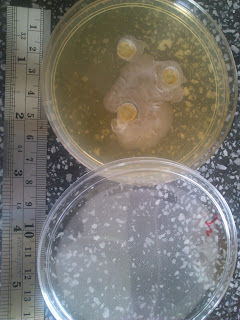Di kedai mamak bersama dua orang kenalan lelaki. Tiba-tiba mata beliau tertancap kepada sesuatu di hadapan, lalu berkatalah dia.
“Ah, ternampak. Rezeki.”
“Apa?” tanyaku.
Berlalu seorang anak gadis dengan seluar ketat dan jarang, yang disebabkan kedudukan cahaya dan pergerakan badan, menampakkan sesuatu yang tak patut dilihat.
Ah, spesis lelaki adalah spesis yang aneh. Tika wanita merasa geli-geleman jikalau terlihat aurat lelaki, lelaki pula kelihatan suka ketika melihat aurat wanita.
Tapi rezeki katanya?
Saya mula menggaru kepala.
Er...aurat itu bukankah, kalau didedahkan berdosa...jadi kalau dilihat berdosa jugakan? Di manakah hadiah “rezeki” di situ? Saya nampak,hadiah dosa.
Trololol. Jangan marah bang. Eh adik.
Tapi kemudiannya malam Khamis lalu saya menonton forum perdana ehwal islam, kebetulan isu ini disentuh kembali. Jemputannya adalah Ustaz Badli Shah dan Dr Fazdilah Kamsah.
“Kalau terlihat sekali itu, tidah berdosa. Alihkan pandangan.” Kata Ustaz Badlishah kalau tidak silap.
Dia mungkin sekali merujuk kepada hadis ini:
"Dari Jarir bin Abdullah, ia berkata: Saya bertanya kepada Rasulullah s.a. w. tentang melihat (aurat wanita) secara tiba-tiba tanpa sengaja. Maka jawab Nabi: Palingkanlah pandanganmu itu!" (Riwayat Ahmad, Muslim, Abu Daud dan Tarmizi)
Oh di situ datangnya maknanya rezeki. Kerana pandangan pertama itu pandangan tak sengaja. Ya lah, mata lelaki itu agak tajam. Pantas saja menangkap apa yang disukai, kadangkala tanpa disedari.
 |
| Apa yang nampak ialah kasut. tapi jadilah. |
It’s almost primal instinct, really. Teringat pula suatu uji kaji yang dilakukan wanita Perancis seorang ini, yang meletakkan kamera tersembunyi di badannya. Apabila diteliti kembali rakamannya, dapat disimpulkan bahawa lelaki memang cenderung memandang kepada ehem-ehemnya. Pendek kata, mana-mana lelaki yang lalu, mesti memandang. Adalah juga yang selepas pandangan pertama, beralih dan pandang kali kedua (mesti cun awek ni ye tak?).
Jadi mungkinlah dapat disimpulkan bahawa ia memang adalah nafsu semula jadi mereka untuk memandang kepada aurat perempuan. Mungkin, itulah sebabnya pandangan pertama itu tidak dipersalahkan.
Jadi bolehlah ditengok. Jadi ialah rezeki ye tak?
Terpulang apa definisi yang anda mahu beri. Yang penting pandangan pertama haruslah pandangan tidak sengaja. Bukan pandangan sengaja seperti pergi mengintai bilik mandi atau google imej. Dan paling penting, kalau aurat itu terdedah tanpa disedari, dan anda terlihat, jangan tengok kali kedualah!
 |
| Yeah that includes 9gag and imgur too. |
Oh berbalik kepada perempuan dalam cerita di mamak tadi. Jangan salahkan dia pula. Bukan dia sengaja hendak beri secara percuma. Mungkin sekali itu hanya wardrobe malfunction—dia tidak sedar bahawa pakaian dia dalam keadaan tertentu, pergerakan tertentu, akan ternampak.
Macam saya. Selalu sangat kena wardrobe malfunction. Contohnya, hari ini.
Apekebengangnya lepas zuhur baru terperasan. Lepas dah pergi sarapan, print dokumen, naik turun pejabat, beli buku bagai.
Ahh untungla korang semua dapat rezeki free. Haram Betei.
Ok, ni sebnanrnya entri luahan perasaan je. Kalau nak tengok hukum penuh dia, UZAR dah terangkan.
Assalamualaikum.





































